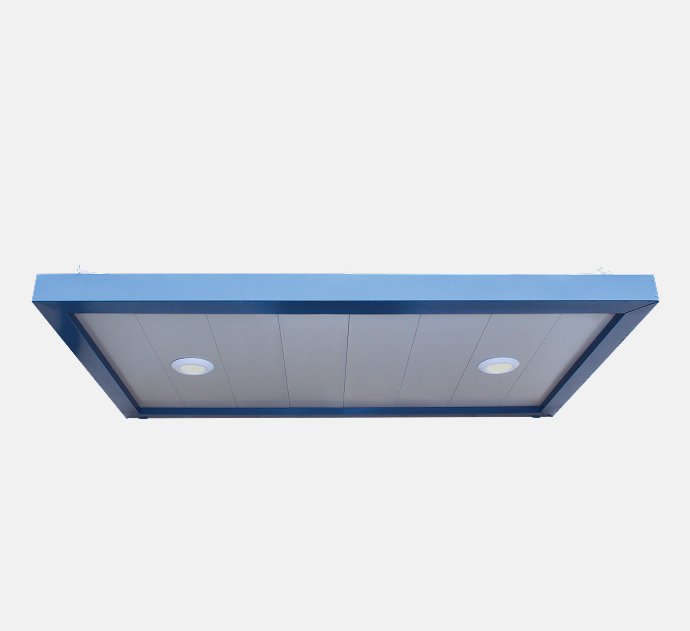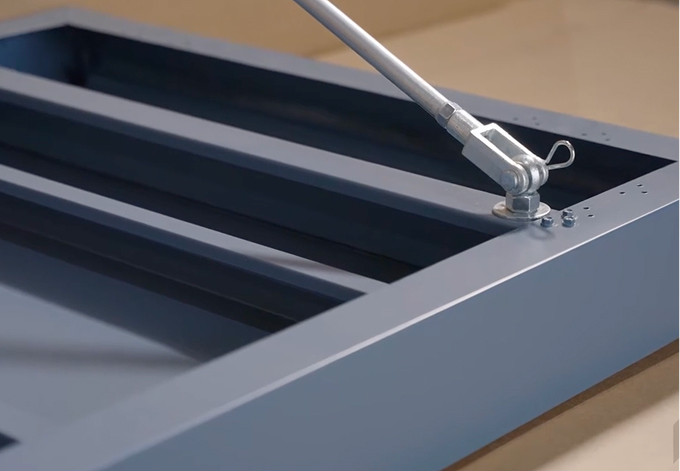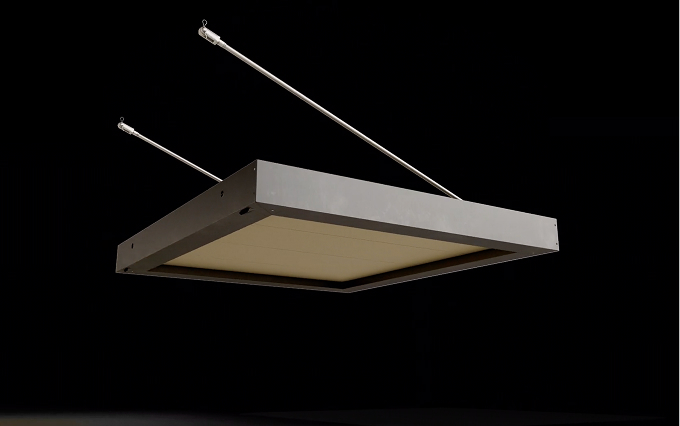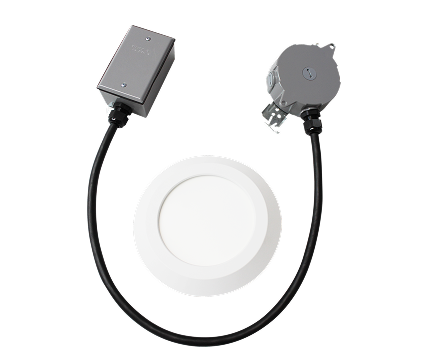Load Specifications
Wind loads shown are uniform loads on a 4′- 6″ wide canopy with 2 braces.
Wind loads calculated per ASCE 7-16 Section 30.11, using net pressure coefficients on attached canopies considering contributions from upper and lower surfaces.
- Topographic factor, Kzt = 1.0
- Wind directionality factor, Kd = 0.85
- Ground elevation factor, Ke = 1.0
- Mean canopy height, hc:
- Max 60′ above ground for 4′ Projection, Exposure — B
- Max 53′ above ground for 4′ Projection, Exposure — C
- Max 53′ above ground for 5′ Projection, Exposure — B
- Max 30′ above ground for 5′ Projection, Exposure — C
- Mean building eave height, he:
- Max 60′ above ground for 4′ & 5′ Projections, Exposures — B & C
Snow loads shown are uniform loads on a 4′-6″ wide canopy with 2 braces. Snow loads shall be determined by engineer utilizing applicable codes and project-specific design criteria.
Depending on canopy width (10’-0” maximum), up to four hangers may be required per canopy section to achieve wind and snow loads.
NOTE: For more stringent loading requirements, custom engineering analysis is available upon request.
Use our Canopy Calculator to generate specifications based on load data, building codes, risk categories and building dimensions.
Construction
- Economical and attractive overhead protection from the elements
- Specifically designed for high wind load and heavy snow load areas
- 24-gauge flat soffit and integral gutter with rear-mounted drains
- 16-gauge galvanized internal frame for 4′ projection and 14-gauge galvanized internal frame for 5′ projection
- 5/8″ diameter rod end 4140 hot rolled annealed (HRA) [F.y = 125 ksi]
- 16-gauge telescoping support channels mount behind wall panel between girts, mounting clips and fasteners included
- 3/4″ galvanized pipe hangers with adjustable rod ends
Options
- Masonry mount (anchors by others)
- Downspouts
- Front mounted drains
- Light Kit (see Lighted Personnel Door Canopies)







